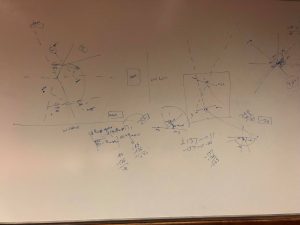My debugger program (Cube Monitor) stopped working this week so a looot of time was sunk into debugging it with no success yet. So the plan is, now that I’ve pushed all the relevant code to the remote repo, we’ll work from Will’s computer and pair-code until/unless I figure this out.
Also, we figured out how to structure our code to get 4 mics to work, and we need to implement that.
I also debugged some code involving removing the arbitrary mic offsets we observe for different mics – not 100% sure if it works yet though (it was in the middle of debugging this when I realized my Cube Monitor was broken).
One of my mics wasn’t working properly in stereo – spent some time and eventually realized that it was because the stereo connection wasn’t cut properly so cut that and it was better.
To-Do:
- Fix this annoying software bug whose source is still extremely mysterious to me
- Get 4 mics working properly, and test it out on Will’s computer
- Test, see if we meet our metrics next week – if we do, then we can begin to think about stretch goals like classification, if not we’ll need to work on getting latencies down or accuracies up…

